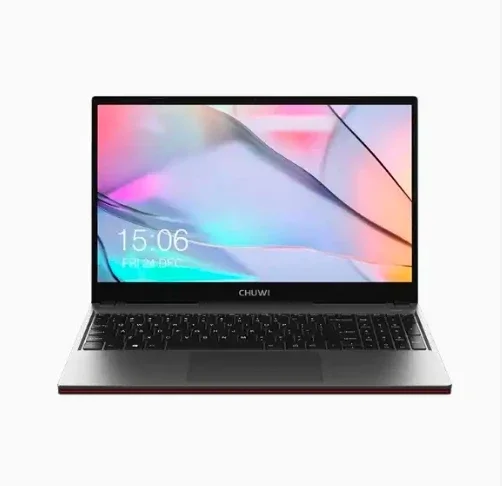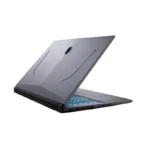
When shopping for a budget laptop, most people’s first instinct is to head to Best Buy. But what if we told you that the best $500 laptop isn’t sitting on their shelves? After an intensive comparison between a traditional retail option and a direct-from-manufacturer alternative, we discovered that savvy shoppers are looking beyond big box stores to find exceptional value.
The Surprising Contender: Chuwi Corebook X
While Best Buy’s top $500 recommendation was HP’s simply-named “HP Laptop,” we decided to pit it against the Chuwi Corebook X—a machine that’s been making waves in the budget laptop space. Chuwi, a company that’s been around longer than most realize, primarily sells through AliExpress but recently launched their own storefront.
The Corebook X immediately caught our attention with specs that seemed too good to be true: a Core i5 processor paired with a 1440p display for just $500. At this price point, you’re typically lucky to get 1080p resolution, making this offering particularly intriguing.
First Impressions: Build Quality That Defies Price
The Chuwi Corebook X doesn’t feel like a $500 laptop. If you handed it to someone without revealing the price, they’d likely estimate it starts around $999. While it doesn’t feature a premium unibody chassis, the multi-piece construction is executed with impressive fit and finish that doesn’t compromise the overall experience.
The laptop sports a surprisingly large trackpad and features an unexpected 3:2 aspect ratio display—the same ratio Microsoft uses for their Surface devices. This attention to detail extends to practical elements like the keyboard, which performs far better than expected for this price range, and the inclusion of an Intel Wi-Fi chipset (a detail we’ll explain the importance of later).
Port Selection and Charging
The Corebook X includes essential connectivity: one USB-C port supporting up to 65W power delivery, one USB-A port, a headphone-microphone combo jack, and a micro SD slot. While the included power adapter uses a standard barrel jack (clearly a cost-saving measure), the USB-C power delivery capability is a significant advantage for users who prefer carrying a single charger for multiple devices.
What to Look for in a $500 Laptop
Before diving deeper into our comparison, here are the key specifications you should demand in this price range:
- Never pay full price: Always look for sales and deals
- Processor: One to two generations old i5 or R5 chips
- Memory: 16GB of RAM minimum
- Storage: Real SSD (not eMMC storage)
- Display: At least 1080p resolution
- Wi-Fi: Avoid 1×1 Wi-Fi cards that will bottleneck your internet experience
The Best Buy Alternative: HP Laptop
HP’s offering hits most of the marks we expect from a budget-conscious machine, but the differences become apparent immediately upon handling. The HP laptop feels noticeably cheaper and thicker than the Chuwi, despite the Chuwi actually having taller feet for better airflow.
The HP does offer more robust I/O with two USB-A ports, USB-C, HDMI out, full-sized SD card slot, and headphone jack. However, it lacks USB-C power delivery—a significant disadvantage that forces users to carry a dedicated barrel jack charger.
Display Quality: A Clear Winner
The display comparison reveals perhaps the most dramatic difference between these machines. The Chuwi’s 1440p panel reaches 445 nits of brightness while covering 97% of the sRGB color space with impressive color accuracy (Delta E2000 of 2.4 average).
In contrast, the HP’s display maxes out at just 280 nits with only 63% sRGB coverage and poor color accuracy (Delta E2000 of 3.9 average, maximum 19.7). The difference is immediately noticeable—the HP’s display appears flat, dull, and lifeless compared to the vibrant Chuwi panel.
Performance: Modern Architecture Makes the Difference
The Chuwi Corebook X features an Intel Core i5-1235U—a 10-core processor with two performance cores and eight efficiency cores. While only one generation newer than the HP’s i5-1135G7, the jump from 11th to 12th generation Intel processors was substantial, resulting in a 71% increase in Cinebench multi-core scores.
This performance advantage extends to gaming as well. While neither machine targets hardcore gaming, both should handle casual titles like Dota 2 or Rocket League. With turbo mode enabled (providing about 11% additional performance), the Chuwi significantly outperformed the HP in every gaming test.
Storage Considerations
Both laptops feature what we call “cacheless SSDs”—drives without DRAM cache that use system memory instead. Think of DRAM cache like a librarian’s computer system versus using old index cards. Without proper cache, performance suffers and drive longevity decreases.
Fortunately, both machines include an additional M.2 slot for storage expansion, which we’d recommend utilizing as soon as possible. The Chuwi even includes a thoughtful thermal pad for SSD heat dissipation.
Audio and Video Quality
Neither machine excels in webcam quality, both maxing out at 720p. The Chuwi’s camera struggles with exposure, particularly with lighter skin tones, while the HP provides better color balance but lower overall quality.
For audio, the HP delivers louder sound with more low-end response, but also significantly more distortion and fan noise during operation. The Chuwi runs nearly silent, which many users will prefer for professional video calls.
The Battery Life Reality Check
Here’s where the Chuwi stumbles significantly. Despite featuring a 46 watt-hour battery (10% larger than the HP’s) and more efficient 12th-generation processor, real-world battery life disappointed dramatically.
While the HP achieved an impressive 6 hours and 52 minutes in our endurance test, the Chuwi managed only 3 hours and 17 minutes. Even in eco mode with minimum brightness, it barely reached 3 hours and 41 minutes.
Chuwi’s response to our inquiry about battery performance was remarkable: they claimed 3.5 hours is expected for “continuous usage” while their advertised 8 hours applies to “intermittent usage.” By that logic, any laptop gets infinite battery life when turned off.
The culprit is likely the high-resolution, high-brightness display combined with potentially poor power management. While some users might accept this trade-off for superior screen quality, others will find it dealbreaking.
The Verdict: Choose Your Priorities
The Chuwi Corebook X excels in areas that matter most for daily productivity: superior display quality, better performance, quieter operation, and USB-C charging capability. However, it fails dramatically in battery life—a crucial consideration for truly portable computing.
The HP laptop offers more traditional connectivity, better battery life, and the security of purchasing from an established retail channel. But it feels outdated with poor display quality and significantly weaker performance.
Final Recommendation
For users who primarily work near power outlets and value display quality and performance, the Chuwi Corebook X represents exceptional value despite its battery shortcomings. The 1440p display alone justifies consideration, especially for photo editing, content creation, or simply enjoying sharper text and images.
However, if battery life is non-negotiable for your workflow, the HP laptop—or similar offerings from established manufacturers—might better serve your needs despite the performance and display compromises.
The broader lesson is clear: don’t limit yourself to traditional retail channels when shopping for budget laptops. Direct-from-manufacturer options like Chuwi often provide superior hardware at competitive prices, though they may require accepting trade-offs in areas like battery optimization or customer support accessibility.
Whatever you choose, remember the golden rule of budget laptop shopping: never pay full price, and always prioritize the specifications that matter most for your specific use case.





